Goemtrey Unit 12- Transformations
1/26
There's no tags or description
Looks like no tags are added yet.
Name | Mastery | Learn | Test | Matching | Spaced |
|---|
No study sessions yet.
27 Terms
Pre Image versus image
Pre image = The points before the transformation
Image = points after a transformation, notated with ‘
Translate
To slide (ridged motion), preserves angle measure and segment length
—> notated as (x,y)—> (x+ / - #, y + / - #)
Reflection
To flip, must include what you are reflecting over (aka: line of reflection)
—> line of reflection is the perpendicular bisector of the segment formed between the pre image and image
Dilate
NON rigid motion
To make something bigger/smaller proportionaly, to move points closer or further from the enter of dilation
—> must include center point and scale factor
—> dilated point = closer to further from another point, dilated line = longer or shorter
—> if dilated by n the area is n² and the perimeter is n
—> Dilated line = only change the y intercept by the scale factor
—> pRESERVE: Angle measure, shape, orientation
—> do NOT PRESERVE: Distance, congruence
—> if you can map on by dilation they are similar
Define “map onto”
If you can map a shape onto another shape using dilation they are ____
If you can map a shape onto another shape using transformations they are ____
Map onto: al points in a figure can be placed on top of a point on another figure
—> rigid motions (translation,rotation,reflection): shapes are CONGRUENT
—> non-rigid motions (dilations): shapes are SIMILAR
Rotational symmetry
If it can be rotated and mapped onto itself (ignore 0 and 360)
—> if regular polygon = can be mapped onto itself using any multiple of the measure of each angle, ex: regular decagon 360/10 =36, anything multiple of 36 will carry it onto itself
Point symmetry
If it has 180 rotational symmetry

Line symmetry
If a shape can be reflected and mapped onto itself
Vector
Direction and magnitude (length)
—> same vector means they have the same direction and magnitude, doesn’t matter where they are placed
Tesselation
Geometric pattern that completely cover the plane (flat surface) without any gaps or overlaps
Ex: hexagons, triangles
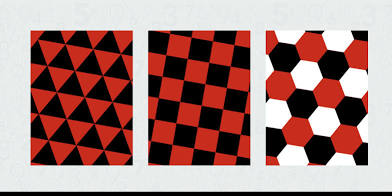
Name all “-agons” 1-12
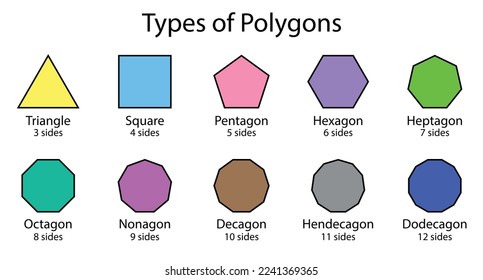
Line of reflection
What the points are being reflected over, also the perpendicular bisector of the segment formed by the two points (image and pre image)
—> count away from reflection line (equidistant)
—> labele points
Label your points!!!
Reflected across…
Y - axis
X - axis
Y = X
Y = -X
Y -axis = (x, y) —> (-x, y)
X - axis = (x, y) —> (x, -y)
Y = x (x,y) —> (y,x)
Y= -x (x, y ) —> (-y, -x)

How to dilate an image
1) find length and mark it with a arc
2) replicate length by scale factor using compass (arc)
3) label new point with apostrophe
—> before: draw a line between center of dilator and the point you are dilating
Why: dilation of a point = moving a point closer or further
How to dilate a line (equation)
1) multiple the y - intercept by scale factor using
2) slope stays the same, only the y-intercept changes
3) ***MUST CHECK if the center is on the line (plug in the solutions in equation) then the equation does NOT change
Preserve
To stay the same
Rigid motions: preserve distance and angle
Dilations: preserve slope and angle
Rigid motion
Translations, rotations, and reflections.
—>Transfformations that produce a new figure congruent to the original figure
—> figures before and after the transformation are congruent
—> dilations are not rigid
What is the rule for any counter clockwise 90 degree rotation

What is the rule for any 180 degree rotation
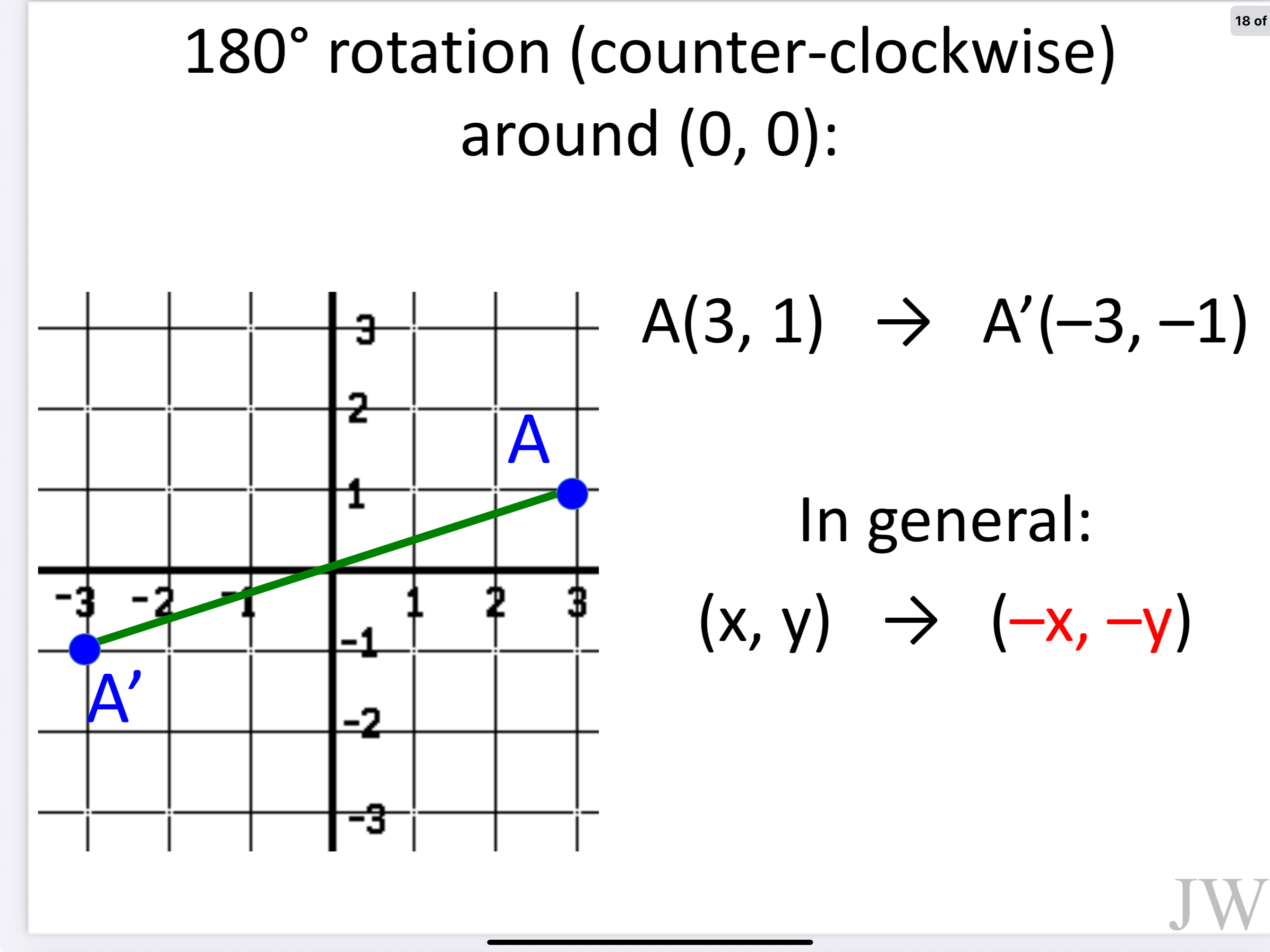
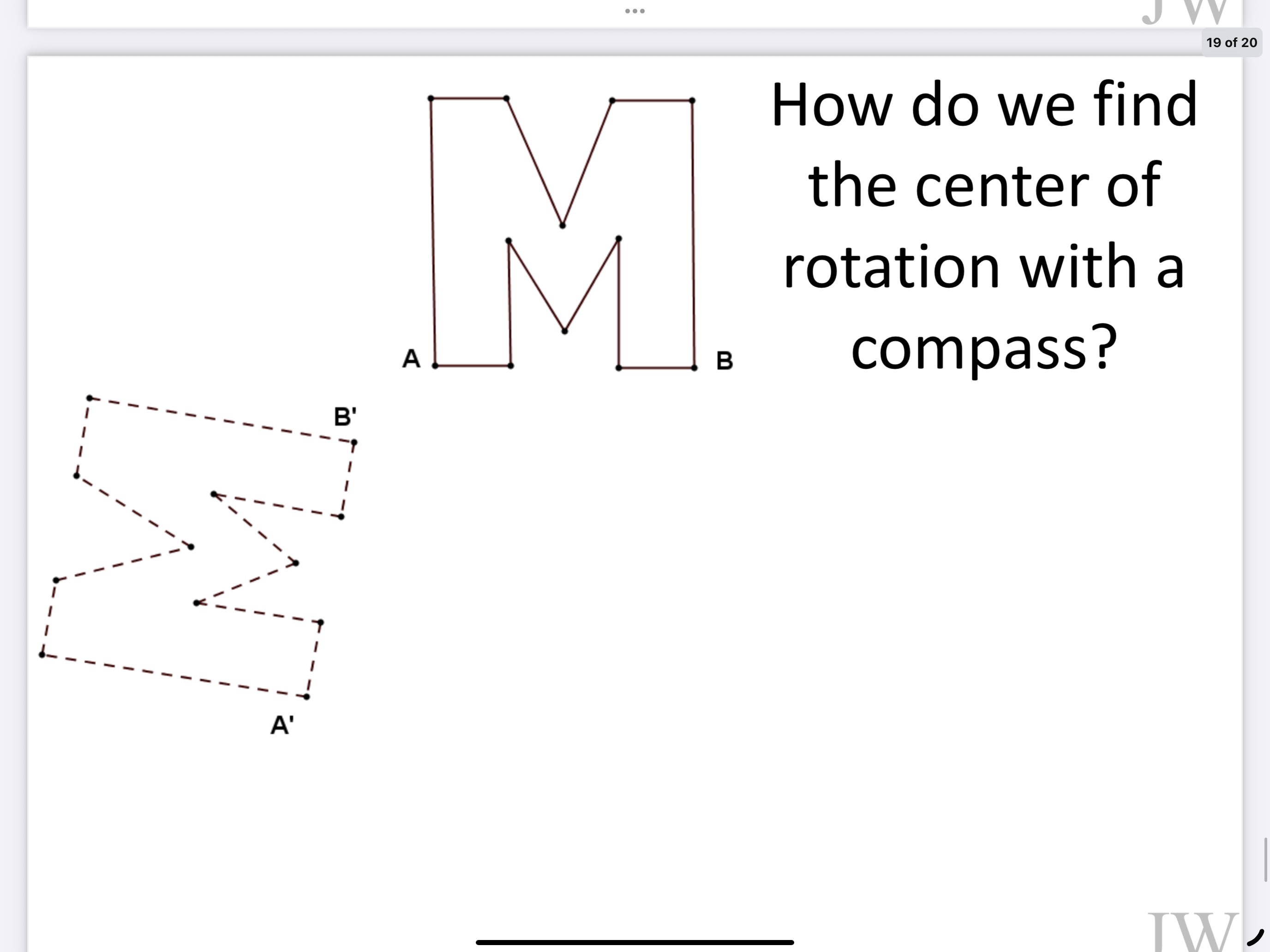
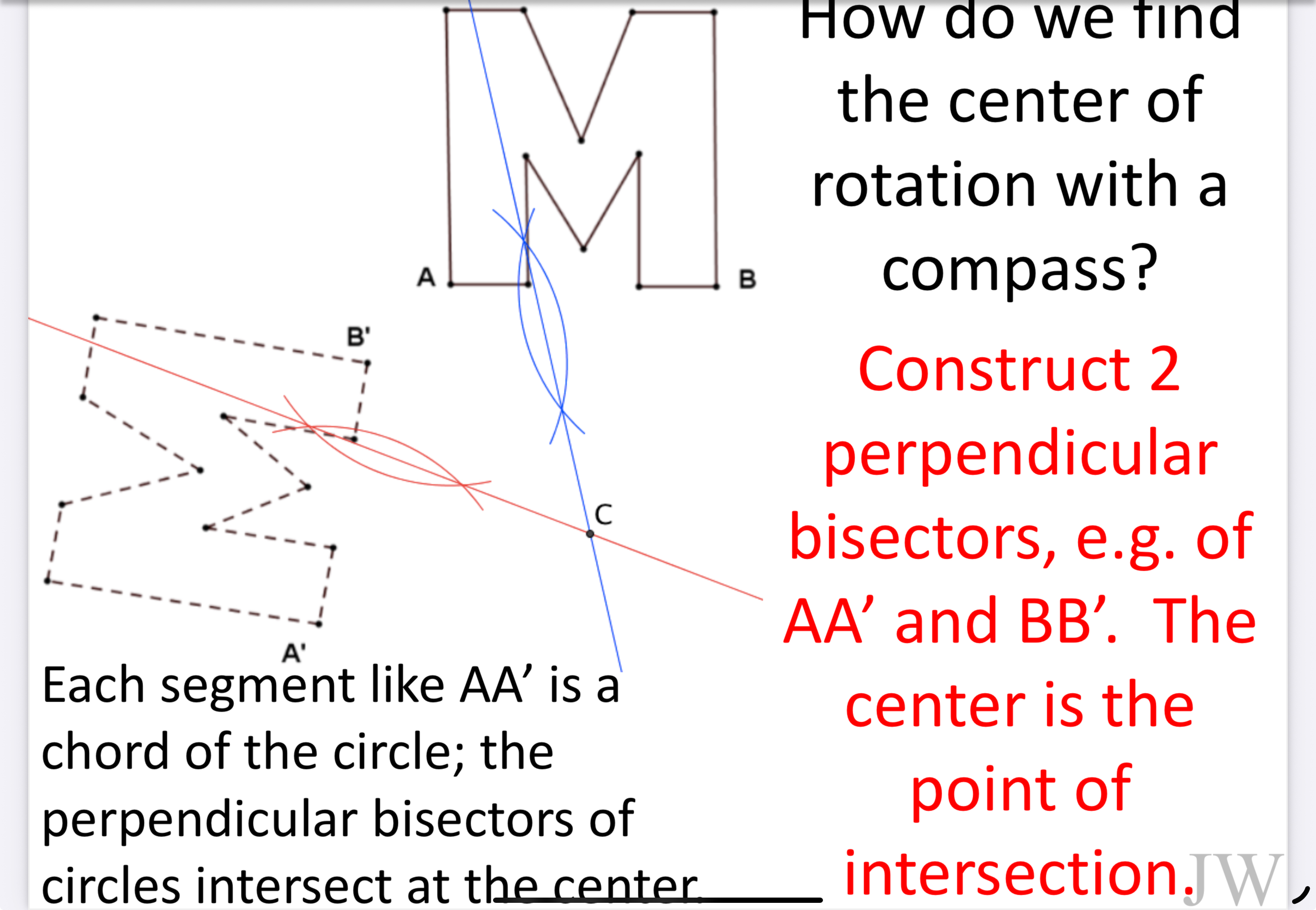
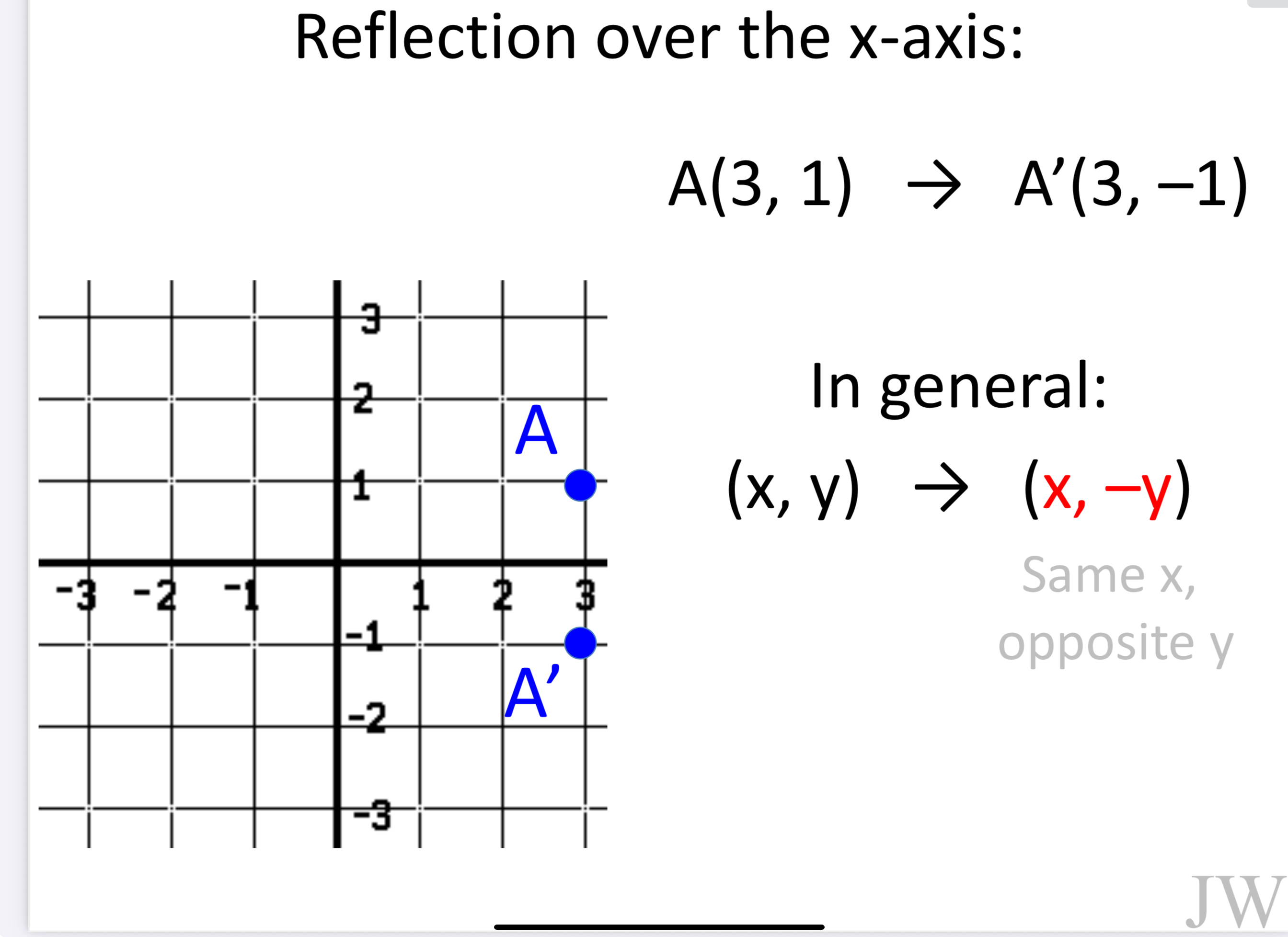
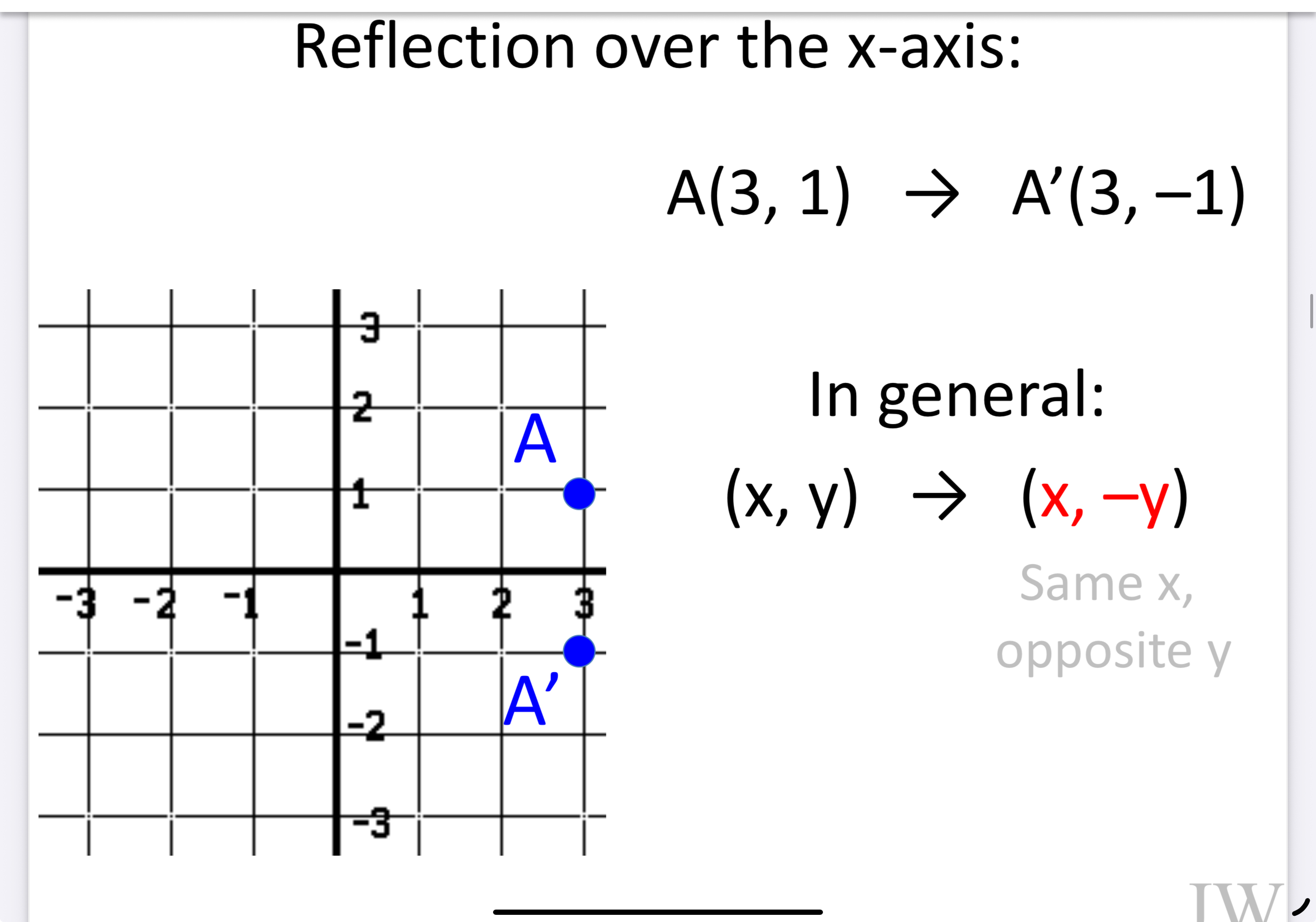

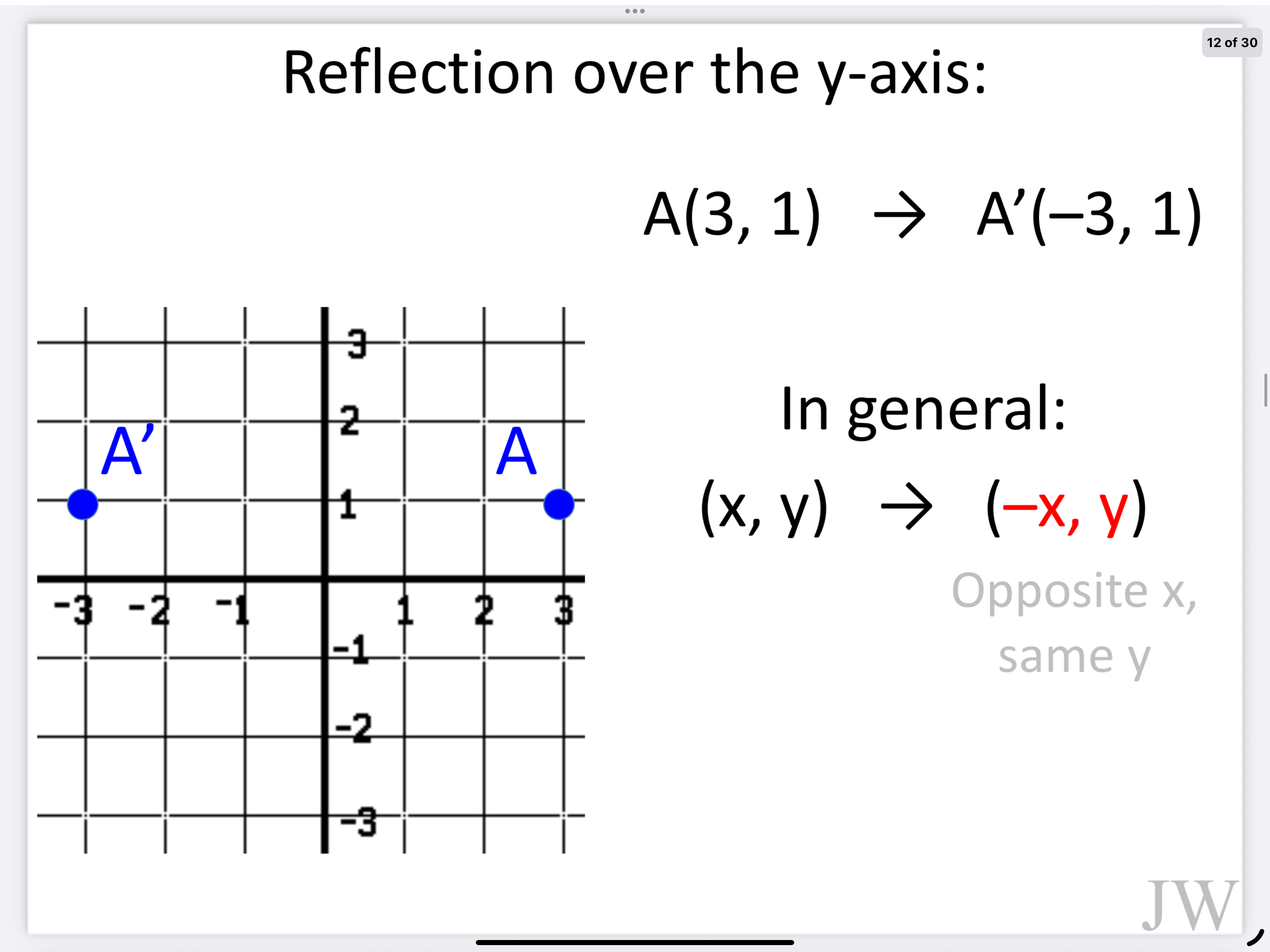

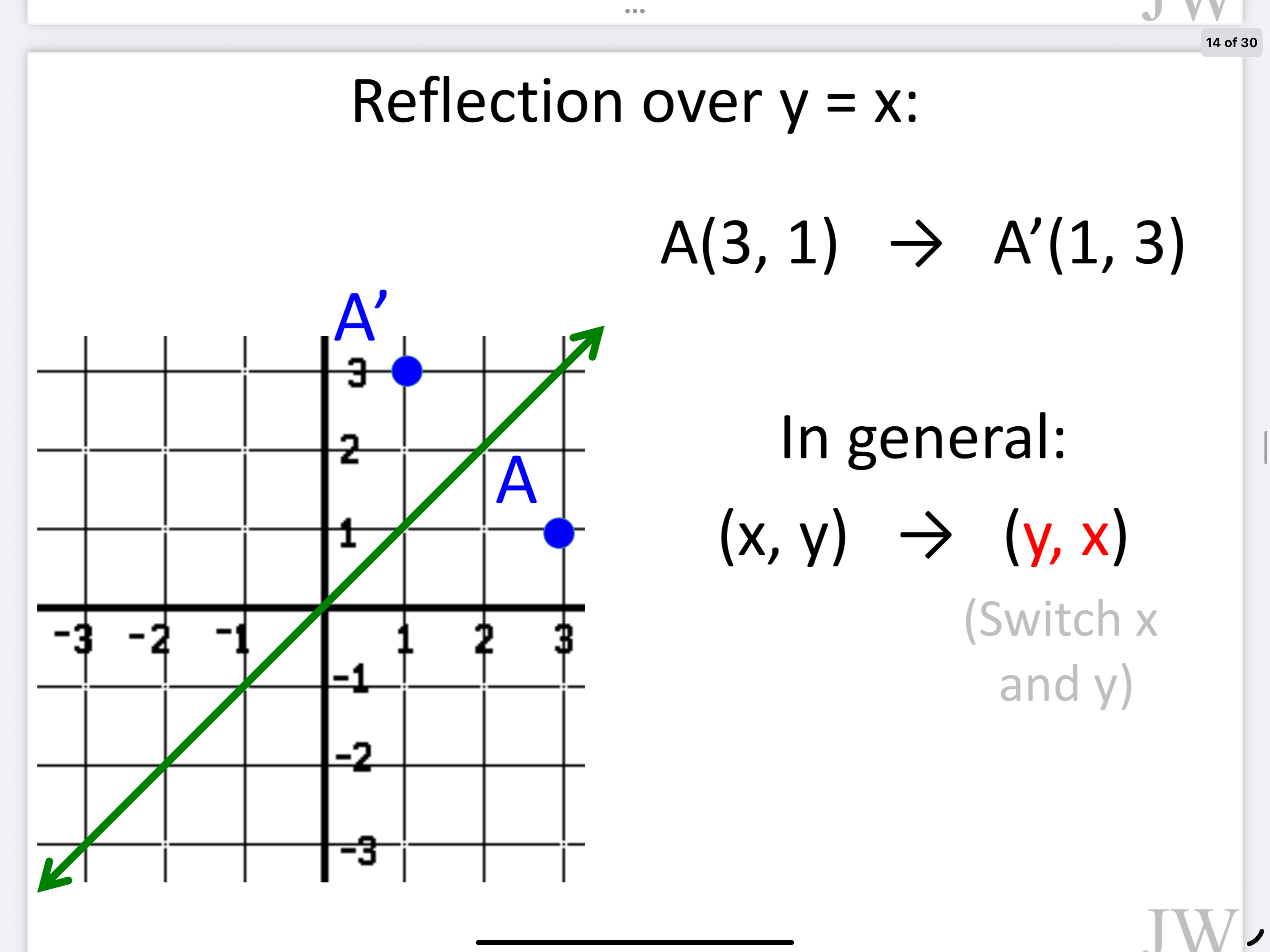
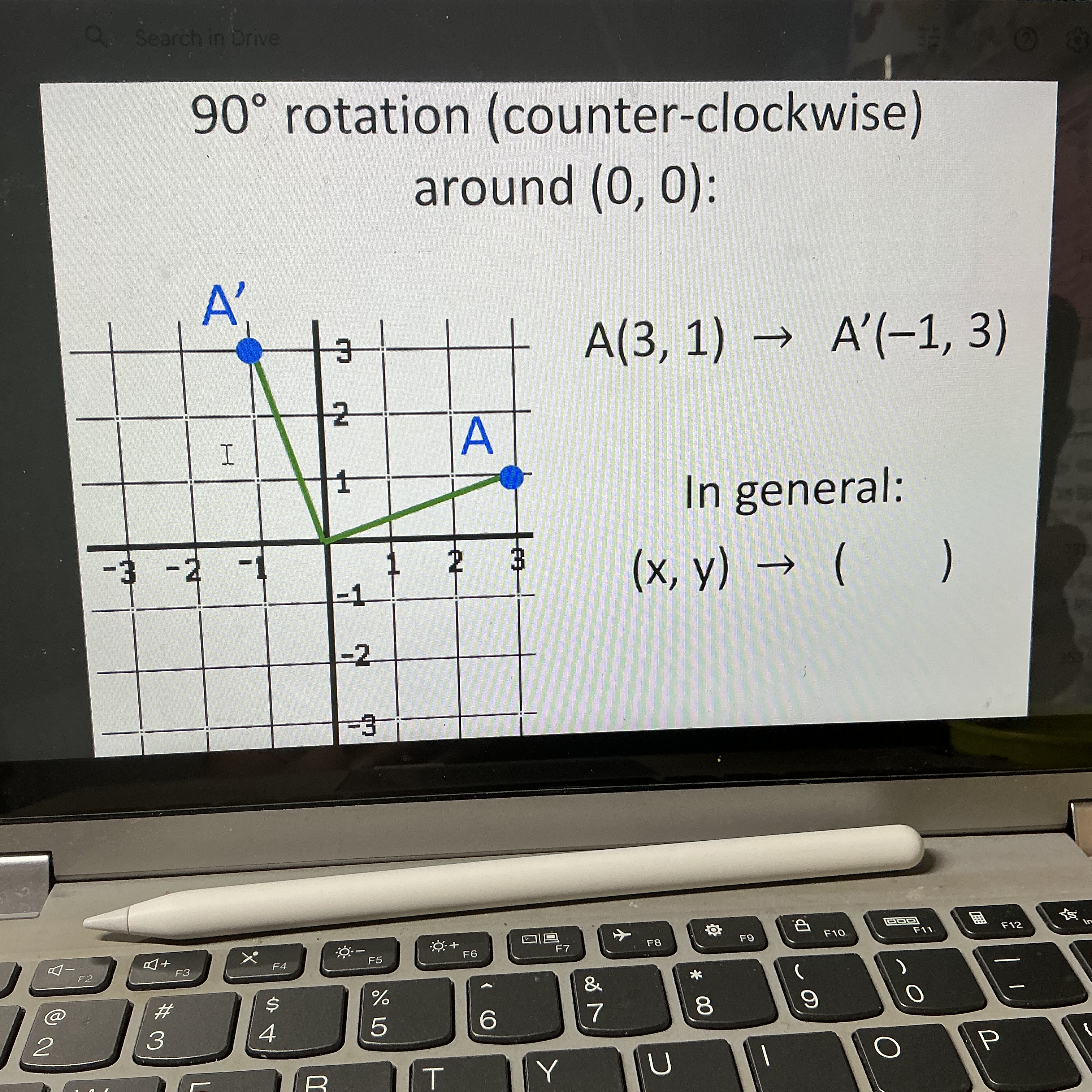
The slope of the line connecting the point being rotated and the other point (image and pre image) should be perpendicular (forming right angle) meaning they should have negative reciprocals (you can count from the center of rotation!)
IN GENERAL: (x,y) —> (-y,x)

